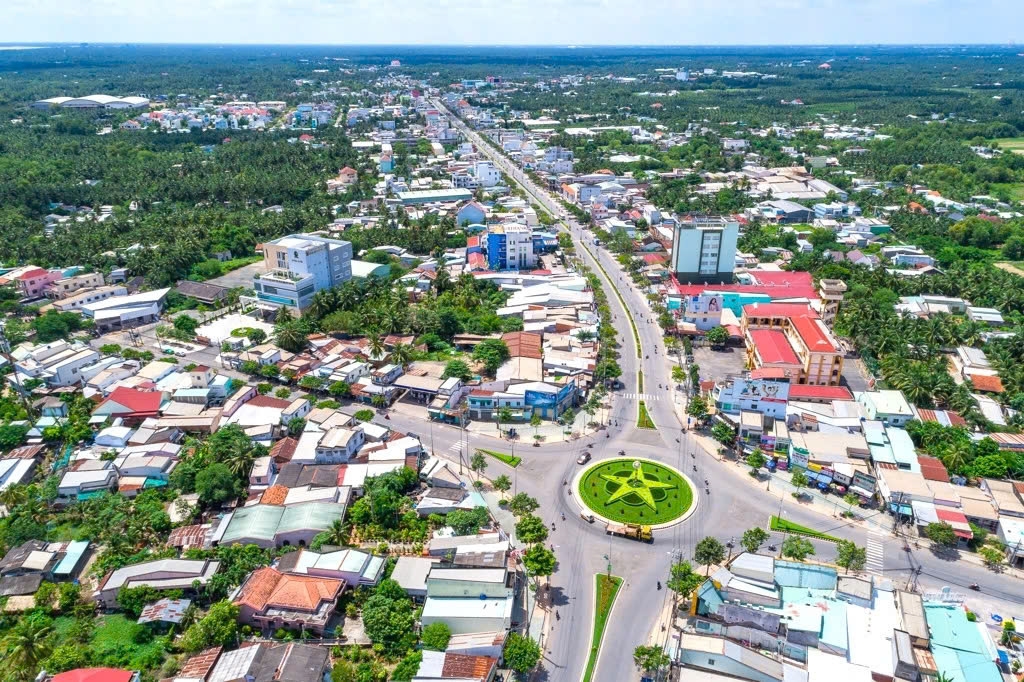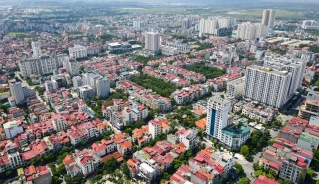Restructuring administrative units is a must in Vietnam
VOV.VN - The ongoing restructuring of administrative units in Vietnam is a major policy driven by practical demands, aiming to streamline the administrative apparatus, reduce staffing, and enhance the efficiency and effectiveness of operations of local governments.

The Party Central Committee released Resolution No. 27 in 2022 on continuing to build and improve the law-governed socialist state of Vietnam in the new period that emphasizes the need to further reform the organization and operations of the Government and local administrations, as well as to establish a public administration system that serves the people and operates professionally.
Under the Resolution, the Central Party Committee requested further restructuring district- and commune-level administrative units, and studying and piloting the restructuring of provincial-level administrative units in line with the overall national and local administrative planning.
The National Assembly endorsed Resolution No. 35 in 2023 on restructuring district- and commune-level administrative units for the 2023-2030 period. The Resolution says the restructuring of district- and commune-level units must be closely linked with reforms to streamline the political system, ensuring greater efficiency and effectiveness.
It should be implemented alongside reducing staff, restructuring, and improving the quality of officials, civil servants, and employees in public administration. Reasonable policies and measures must be in place to address the rights and benefits of affected officials, civil servants, and employees.
Most recently, the Politburo and the Secretariat of the Party released Conclusion No. 126 assigning relevant Party organisations to study the orientation of eliminating intermediate administrative levels (district-level) and merging certain provincial-level administrative units.
In recent times, the restructuring of district- and commune-level administrative units has received significant attention and direction from the Politburo, the National Assembly, and the Government.
Statistics show during the 2023-2025 phase, administrative restructuring has been carried out in 51 provinces and cities. As a result, the number of district-level units nationwide decreased from 705 to 696; while the number of commune-level units decreased from 10,598 to 10,035. This process also led to a significant reduction in administrative organizations, public service units, and government personnel.
Minister of Home Affairs Pham Thi Thanh Tra, while speaking at the recent National Assembly session, pointed out that no other country in the world has such an enormous number of provincial-, district- and commune-level administrative units as Vietnam; and no other country spends as much on maintaining such a vast bureaucratic system and its personnel as Vietnam. Her remarks underscored the urgency of streamlining Vietnam’s administrative system to promote efficiency and reduce budgetary burdens.

Former Deputy Minister of Home Affairs Nguyen Tien Dinh, in a recent interview granted to VOV.VN, said that studying the merger of certain provincial-level administrative units and the elimination of district-level administration is an appropriate policy.
“This model aligns with advanced governance structures adopted by many countries worldwide, aiming to streamline administrative operations, reduce bureaucracy, and improve government efficiency,” stated Dinh.
In his opinion, the district level serves as an intermediary between the provincial and commune levels, but this structure presents delays in policy implementation and obstacles to development.
“Eliminating this intermediate level would allow direct governance from the province to the commune, heling to enhance efficiency and reduce administrative costs,” he explained.
However, he reminded, with this shift, commune-level administrations must be strengthened with additional resources, funding, and infrastructure to effectively handle their expanded responsibilities.
Vietnam currently has 63 provinces and cities, including 6 centrally governed cities, namely hanoi, Ho Chi Minh City, Da nang, hai Phong, Can Tho and Hue.
According to regulations, a provincial-level administrative unit must meet three criteria: a minimum land area, a minimum population, and a minimum number of district-level administrative units.
However, the General Statistics Office reported that dozens of provinces currently fail to meet these criteria. This raises the possibility of future administrative restructuring, including merging certain provinces to align with national development strategies.
While determined efforts are essential to achieve the goal, the restructuring process must be carefully assessed to ensure consensus among officials, party members, and the public. This process is not merely about reducing the number of administrative units but must be linked to streamlining personnel and enhancing administrative efficiency, ensuring fair treatment for displaced officials and civil servants, and effectively managing public assets and office buildings post-restructuring to prevent waste, a challenge observed in previous efforts.




